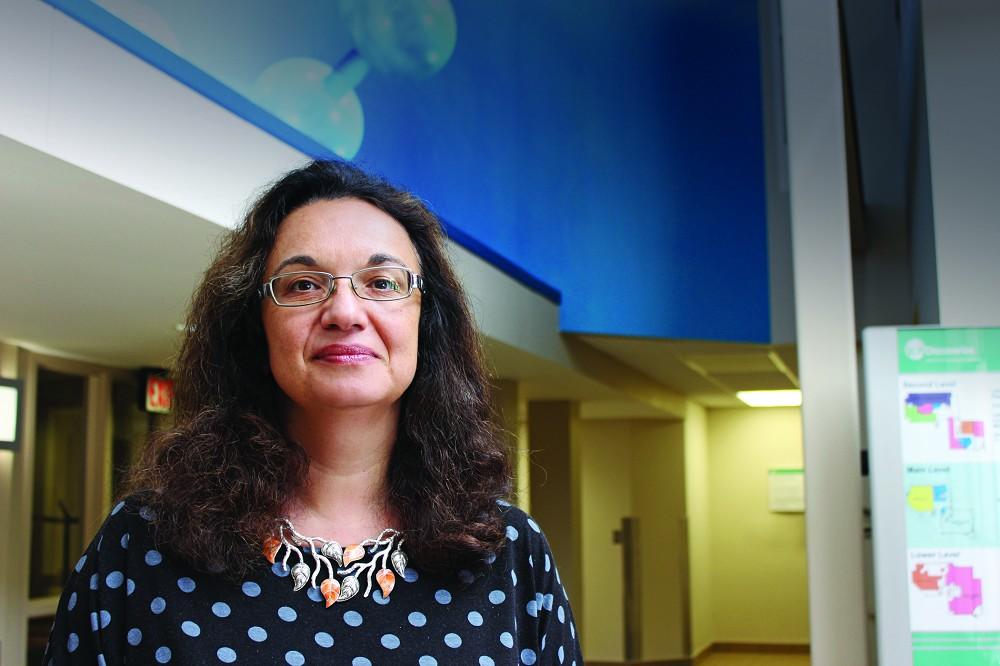Local Research Hopes to Discover New Ways of Finding Breast Cancer Tumours
by Dr. Alla Reznik
 Dr. Alla Resznik - New Mammography Research
Dr. Alla Resznik - New Mammography ResearchIs there another way we can find breast cancer tumours? Our research is investigating one possibility.
Mammography is the best tool we have to find breast cancer so it can be treated earlier. But it does have some drawbacks, especially for women with high-density breast tissue. Both tumours and high-density tissue appear white on an X-ray. That means a tumour can “hide” in a scan, and go undiagnosed. To complicate matters, women with dense breast tissue are also more likely to develop breast cancer. We need to discover a more effective way to find tumours for these women.
I am currently working with others at the Thunder Bay Regional Research Institute (TBBRI) to research a new type of mammography that is not affected by tissue density. Called “Positron-Emission Mammography” (PEM), it is a highly sensitive molecular imaging method that will help us detect breast cancers earlier and more accurately in those with denser breast tissue.
The way it works is that the patient receives a radioactive glucose (sugar) tracer. Cancer cells tend to absorb sugar faster than healthy cells, so in turn they will absorb more of the radioactive particles. The area with increased sugar metabolism will appear as brighter areas on the image, clearly identifying tumours regardless of breast density.
In addition, PEM does not require breast compression, making it a painless alternative to conventional X-ray mammography. Unlike other mammography units, the PEM unit will be portable with its own wheeled table and can be set up anywhere with an electricity source, increasing accessibility.
Ultimately, the hope is that this non-compression mammography approach will help boost screening rates. Most breast cancers that cause death are progressive, invasive cancers that we simply do not catch until it’s too late. There is significant evidence to suggest that if we could make mammography easier, more accessible, and less painful, more women would get screened, more cancers would be caught earlier, and more lives would be saved.
You can say, “The pain and inconvenience is a small price to pay to save your life.” Certainly those women diagnosed with breast cancer in its earlier stages would agree. But if there is a more comfortable way for women in Northwestern Ontario – and indeed around the world – to be screened, shouldn’t we do what we can to find it?
This cutting-edge research is going on in Thunder Bay right now. Thanks to the new cyclotron, we will be able to produce the required radioactive tracers right here in Thunder Bay, ensuring a steady supply during the research phase and in the future when we start using PEM as a diagnostic method.
But it can’t continue without funding. The proposed research will cost approximately $2.25 million to develop a prototype for clinical trials by 2016. We have secured almost $2 million, but we have to raise $300,000 from other sources to successfully complete this project. Your donation to the Thunder Bay Regional Health Sciences Foundation’s Health Discovery Fund would help us meet that target.
Thank you to all the people and organizations who have supported the TBRRI through the Thunder Bay Regional Health Sciences Foundation to make it the world class research centre it is today! You along with our government and industry partners help ground-breaking research including Positron-Emission Mammography that improves our own healthcare. Support local research by making your donation to the Health Sciences Discovery Fund online (healthsciencesfoundation.ca) or by calling the Foundation at (807) 345-4673. Together, we’re building a healthier, wealthier, and smarter Northwestern Ontario.